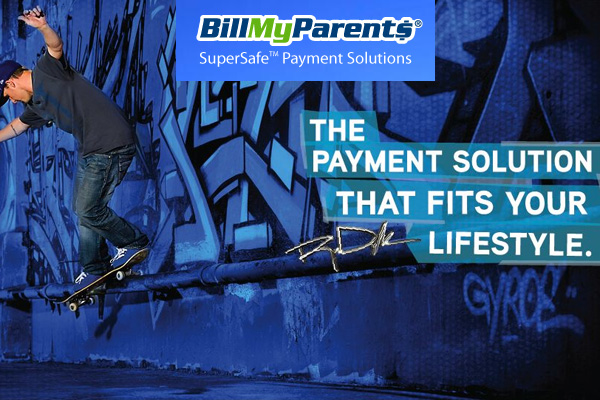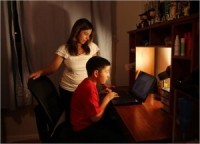BillMyParents® Fact Sheet
 Tuesday, April 12, 2011 at 06:42AM
Tuesday, April 12, 2011 at 06:42AM 
BillMyParents® provides SuperSafe™ Payment Solutions for tweens and teens between the ages of 8 and21 and their parents, ranging from giving parents complete control over purchases to simply monitoring purchase transactions. These solutions include Supervised Shopping™ and theBillMyParents® reloadable prepaid MasterCard®. BillMyParents® is the flagship product of Socialwise, Inc. and is headquartered withthem in San Diego, CA.
BillMyParents® is designed to link parents and young people to guide responsible eCommerce transactions, as well as allowing tweens and teens to shop in traditional retail settings without cash or a credit card. Their solutions foster family dialogue about spending and money habits, and provide the independence teens crave, while giving parents the ability to easily track and control their spending.
Supervised Shopping™ is a convenient way for 8 – 21 year olds to shop online at partner merchant websites. While browsing, users see the BillMyParents® button next to each item. Clicking the button sends an instant email request with product and pricing information to parents, who can decide whether or not to amend or complete the purchase at their discretion, eliminating the need for parents to hand over sensitive payment information or credit card numbers.
The BillMyParents® reloadable prepaid MasterCard® is safer than cash, can be used year-round anywhere MasterCard® is accepted and has no credit implications for either parents or teens. Purchases are not made on credit, do not affect credit scores, and are not withdrawn from a bank account – instead, funds are pre-loaded onto the card by parents. Perfect for managing allowances, the prepaid card is for users between the ages of 13 – 18, and users can only spend whatʼs available on the card account with no fear of over-drafting or associated bloated fees.
The Peace of Mind Control Panel is a proprietary way for parents to monitor and manage the BillMyParents® reloadable prepaid MasterCard®. Transaction Alerts deliver parents and teens a text or email every time a transaction is made, including name and location of the vendor, amount of sale and remaining balance. Lost Card Protection covers a lost or stolen card, and funds are automatically transferred to the replacement card. With Emergency Load, parents can instantly add funds to a card account, and parents have the ability to instantly enable or disable cards using the Lock/Unlock Account feature.
Easy on the budget, itʼs free to use the Supervised Shopping™ program on partner e-commerce sites including PacSun.com. The BillMyParents® reloadable prepaid MasterCard® costs significantly less than other prepaid cards on the market ($3.95 monthly fee and $.75 per-load fee) and there are no fees to activate a card account, contact customer service, check balances or cancel service.
Committed to safeguarding privacy, BillMyParents® utilizes state-of-the-art security measures, providing the highest level of protection against online fraud and cyber crimes using the SSL industry standard. Also PCI compliant (data security standard developed by major credit card companies to prevent theft), all personal and financial data of users and teens remain secure on servers and during transactions. The only information seen by third-party merchants is what is necessary to process and ship an order.
The Team: Several years ago, Jim Collas, CEO and President of BillMyParents®, was surprised to find that there was no simple and safe way for his teens to shop online without having to physically give them his credit card, so he set about creating BillMyParents® with his team. Mr. Collas has over 17 years of senior executive experience in the computer industry and consumer markets. Products and services introduced under Mr. Collasʼ management have accounted for over $28 billion in revenues worldwide. He is supported by a strong operating team whose members come from Ernst & Young, Aurora Electronics, ProFlowers.com, Sprint and CompuCom. The powerhouse BillMyParents® Advisory Board includes Joe Abrams (Co-founder of MySpace) and Maynard Webb (former COO of E-bay).
Socialwise (OTCBB: SCLW), the publicly traded parent company of BillMyParents®, develops platforms that integrate into traditional eCommerce products and services in order to service the explosive growth of online commerce and social networking sites, and was founded in April, 2007.


